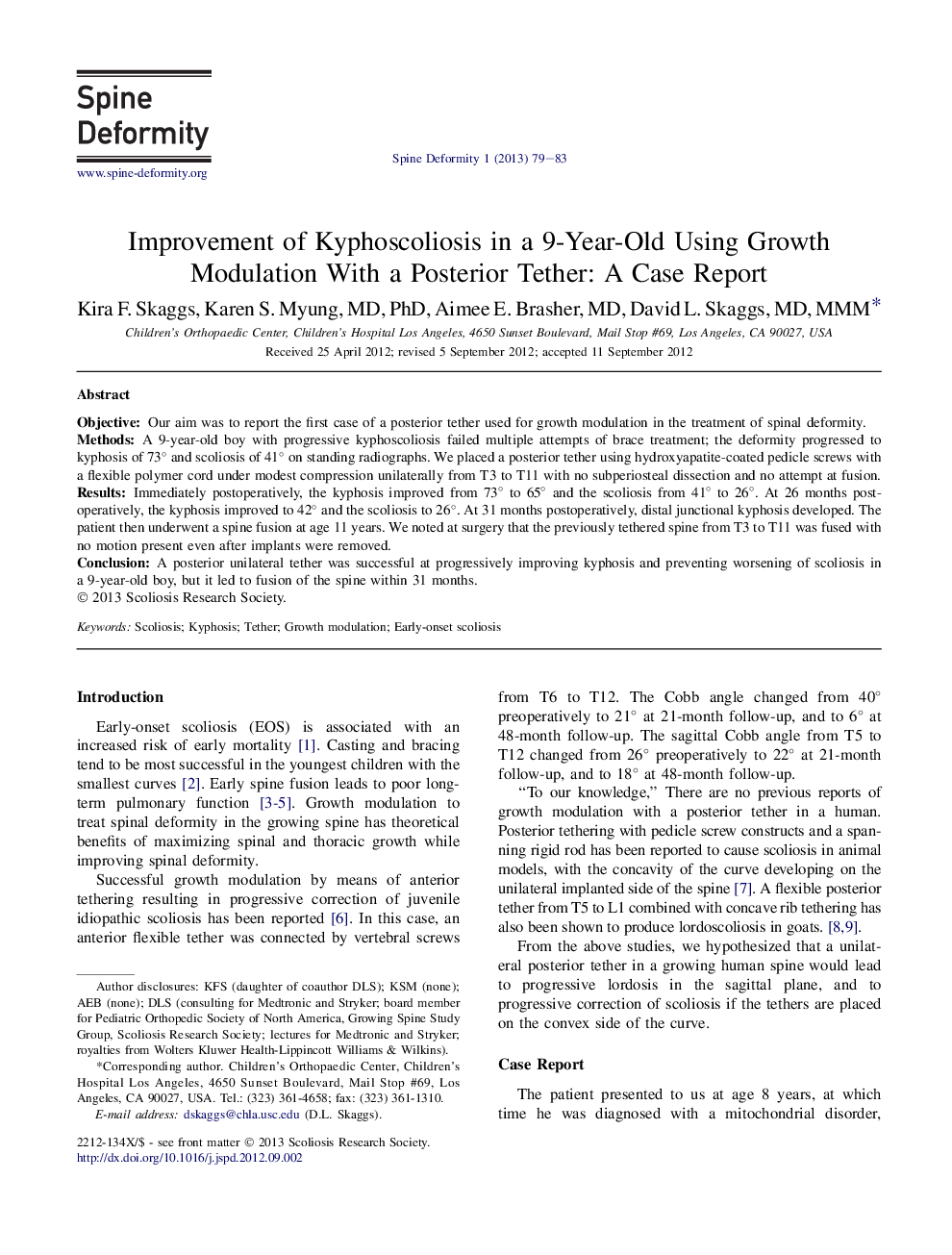| کد مقاله | کد نشریه | سال انتشار | مقاله انگلیسی | نسخه تمام متن |
|---|---|---|---|---|
| 4095507 | 1268537 | 2013 | 5 صفحه PDF | دانلود رایگان |

ObjectiveOur aim was to report the first case of a posterior tether used for growth modulation in the treatment of spinal deformity.MethodsA 9-year-old boy with progressive kyphoscoliosis failed multiple attempts of brace treatment; the deformity progressed to kyphosis of 73° and scoliosis of 41° on standing radiographs. We placed a posterior tether using hydroxyapatite-coated pedicle screws with a flexible polymer cord under modest compression unilaterally from T3 to T11 with no subperiosteal dissection and no attempt at fusion.ResultsImmediately postoperatively, the kyphosis improved from 73° to 65° and the scoliosis from 41° to 26°. At 26 months postoperatively, the kyphosis improved to 42° and the scoliosis to 26°. At 31 months postoperatively, distal junctional kyphosis developed. The patient then underwent a spine fusion at age 11 years. We noted at surgery that the previously tethered spine from T3 to T11 was fused with no motion present even after implants were removed.ConclusionA posterior unilateral tether was successful at progressively improving kyphosis and preventing worsening of scoliosis in a 9-year-old boy, but it led to fusion of the spine within 31 months.
Journal: Spine Deformity - Volume 1, Issue 1, January 2013, Pages 79–83